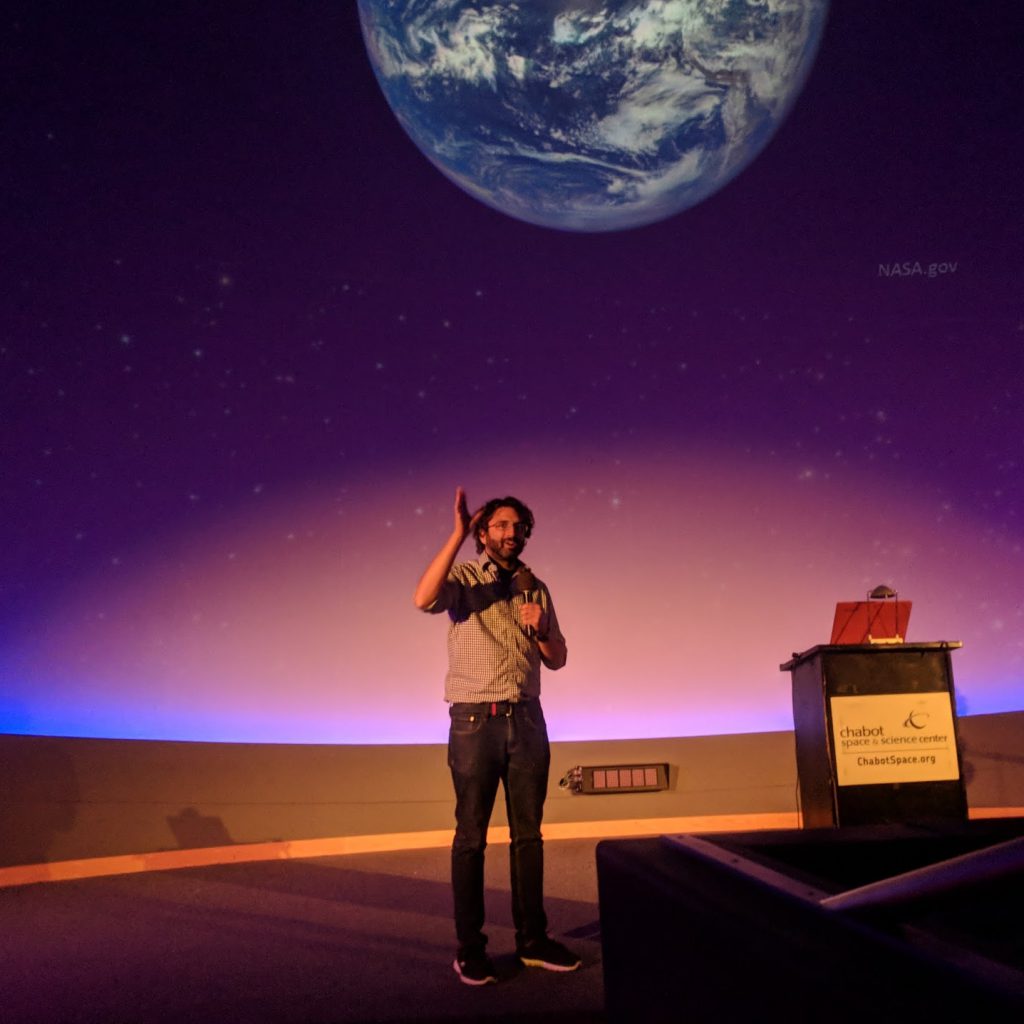BMSIS Scientist Feature: Dr. Sanjoy Som
By Aditi Sharma
On January 28th, 1986, the space shuttle Challenger broke apart 73 seconds into its flight. Age five at the time and living in Switzerland, Sanjoy Som was watching the news with his parents and was in awe and confusion of the fatal incident. He asked his parents what was happening and they told him that a group of people sent to space had been in a terrible accident. Sanjoy explains now, looking back, that he couldn’t believe it: “What? Space? People in space!? Tell me more!”
Sanjoy’s parents noticed his interest in space and bought him the book “Astronomy for the Under Tens” by Patrick Moore. Sanjoy read the book cover-to-cover many times and then decided to join a local Astronomy Club, where he was the youngest member. Through his years in middle school and high school, Sanjoy recounts that science was something he was highly interested in, yet he was not entirely sure whether to pursue it as a career.
Inspired by his high school teachers and his parents, Sanjoy followed his passion for science and decided on aerospace engineering and attended the Florida Institute of Technology for his bachelor’s. After completing his degree in 2002, Sanjoy had even more questions than answers. He notes that “the more you know, the more you realize you don’t know!” He decided to complete a Masters in Aeronautics and Astronautics at the University of Washington for two years. While working on his masters, he discovered a completely new and fascinating world — astrobiology.
Determined to follow what he truly enjoyed, Sanjoy decided to start graduate school again and pursue a Ph.D. in Planetary Sciences with a certificate in Astrobiology at the University of Washington, which he completed in 2010. Soon after, he became a postdoctoral fellow at the NASA Ames Research Center.

Currently, Sanjoy is the CEO and founder of Blue Marble Space as well as a research scientist at BMSIS and the NASA Ames Research Center. Sanjoy has two research tracks in astrobiology.
His first focus is on the bioenergetics of water-rock systems. Sanjoy explores the connection between geology, geochemistry, and microbiology in serpentinizing systems. Serpentinization is a process whereby rock, with the addition of water, is changed into serpentine(rock) and additional by-products such as hydrogen. Sanjoy also notes that water and rock are not limited to Earth. Therefore, there is a possibility that water-rock reactions could be occurring on other planets.
Sanjoy also focuses on the environments of early Earth. In the Precambrian eon, the Earth was quite different from today. There were no animals, no trees, the Earth was spinning faster, the Moon was closer, and the Sun was fainter. As well as this, oxygen had not begun accumulating in our atmosphere by that point. Sanjoy states, therefore, that “for all intent and purpose the early Earth was an exoplanet” and that “the most study-able exoplanet is Earth billions of years ago.” In this, Sanjoy focuses on the evolution of the Earth’s air pressure and how the composition of the Earth’s atmosphere has changed over time.
Beyond his research, Sanjoy advocates the idea of inclusivity and the cooperative exploration of space. As detailed on the Blue Marble Space website, the ‘One Flag in Space’ idea “seeks to promote the use of the Blue Marble logo as a symbol of international unity.” In his research article “Common Identity as a step to civilization longevity,” Sanjoy highlights that teaching about Earth as observed from Space in early education may provide a neutral view of the world. In his article, he recommends The Overview Effect, a cognitive shift that occurs once astronauts see the Earth from space, as a key educational paradigm. To improve societal stability, Sanjoy underscores that we must better emotionally handle different perspectives.
Sanjoy’s journey is inspirational — from a tragic, eye-opening moment as a child to a career in the sciences — and his path embodies the importance of following one’s passions. His vision of establishing a common identity throughout society could greatly help our world become closer.
Aditi Sharma is a communicator of science and a Research Associate with the Blue Marble Space Institute of Science’s Young Scientist Program.
